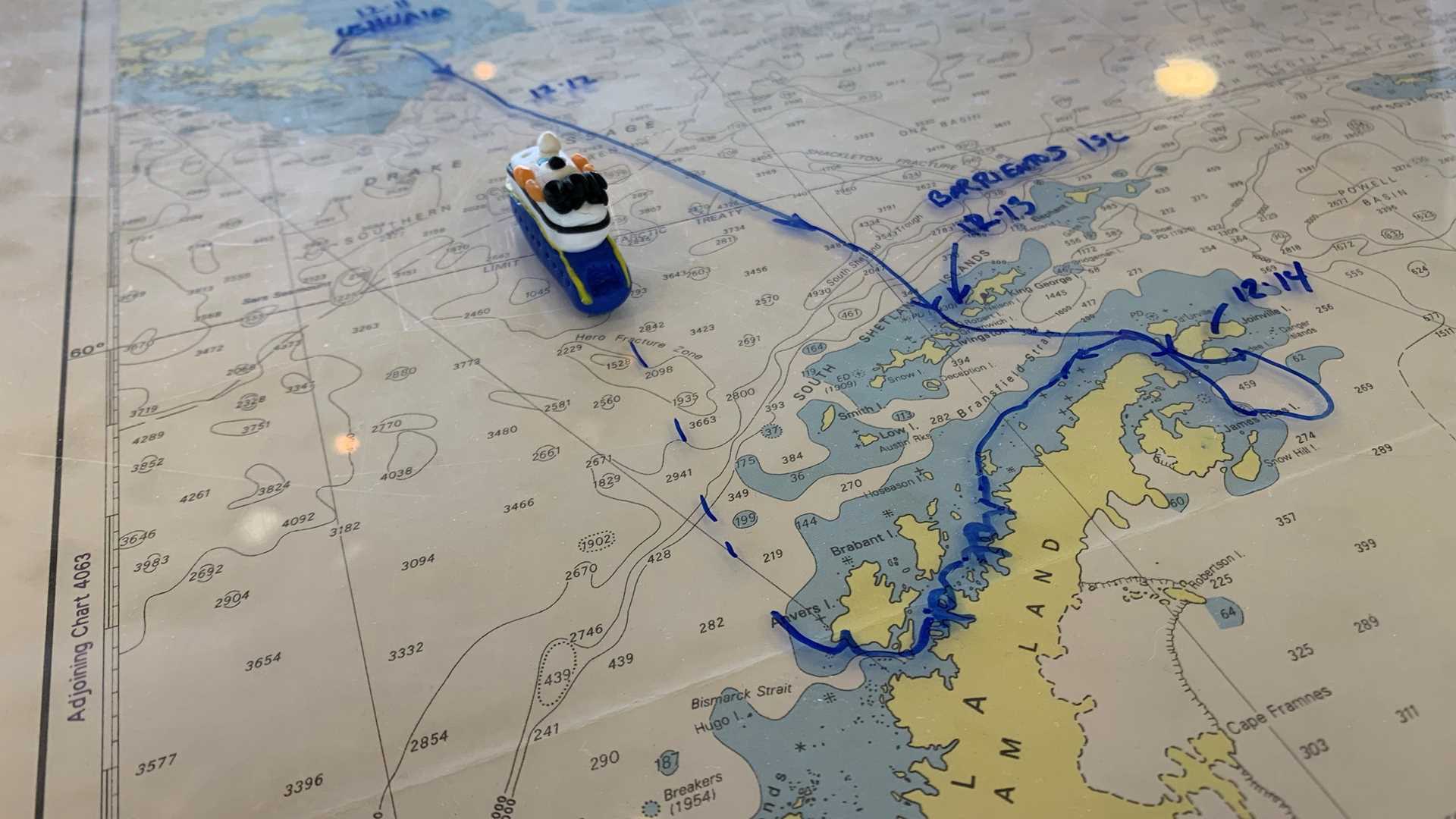We are now northbound across the Drake Passage, heading very nearly towards the triple point where the Southern, South Pacific, and South Atlantic Oceans meet. Of course that distinction is merely a construct of human geography, but in a very real sense we are transiting natural physical and biological boundaries. The Drake Passage is 600 miles of open ocean, where air currents in the atmosphere push storm winds from west to east, driving the West Wind Drift which circumnavigates the southern hemisphere in the range of 50 to 60 degrees south latitude. The West Wind Drift, trying to turn left due to the Coriolis Effect, causes the cold Antarctic waters to dive under the less chilly sub-Antarctic seas, forming a convergence zone. The latter being an abrupt transition that isolates the Southern Ocean and Antarctica and limits the movement of equatorial heat towards high southern latitudes. We’ve seen the results of this isolation; even though it has been sunny and we are near mid-summer’s day, our parkas have been required to keep us warm during most days of our expedition, chilly breezes and cold salt spray invigorates our outside excursions.
Our transit north from the white continent gave us the opportunity for many and varied activities aboard National Geographic Orion. For some, our return to the open sea is a chance to catch up on naps and relaxation after a week of excitement around the Antarctic Peninsula. Others kept a vigilant eye out from Deck 4 aft or on the bridge, looking for seabirds and the possibility to see more marine mammals. Some had thousands of photos to edit and review, while many took time throughout the day to listen to a number of presentations from the expedition staff. I talked with guests about the Cryosphere and the world of ice we just left behind, Nick Cobbing described his route to becoming a National Geographic photographer, Peter Webster illustrated the wonderful life of krill, and Maya Santangelo explained her work photographing a previously unstudied population of Manta Rays in French Polynesia.
I think for all of us, though, a sea day like today is an important time to reflect on the amazing places, dramatic scenery, and remarkable wildlife we’ve seen. Antarctica and the surrounding seas are a unique and special region of the planet, one which we have been privileged to experience.







